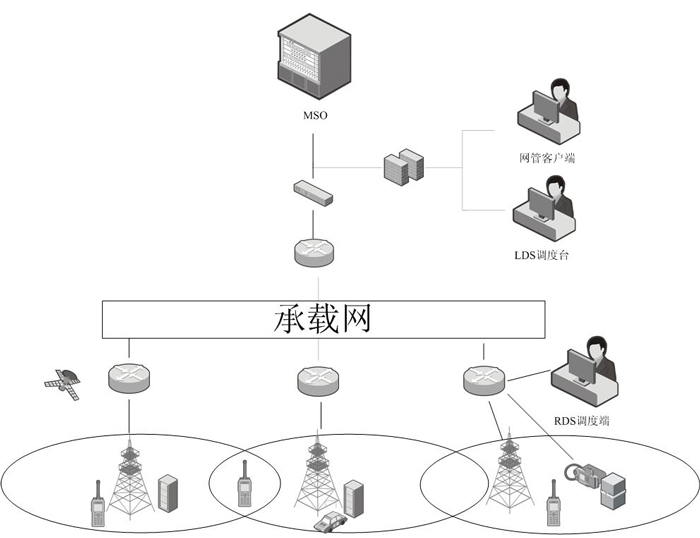SOLUTION
|
|
 |
18149519803
|
|
|
Quality focusRigorous service system
TeamExperienced team
Customer firstBased on customers serving customers
EnterpriseLet every customer affirm our strength and service
|
|
|
business background
The forestry system bears the important responsibility of protecting the national forest resources and promoting the healthy development of the forestry economy. China's forest areas have the characteristics of strong concentration and wide-area unit area. Once a catastrophic accident occurs, it is necessary to investigate the sources of danger and locate the dangerous areas in the first place. The demand for communications in forestry work has become increasingly prominent.
The construction of forestry communication systems is based on a communication network formed by digital ultrashort wave technology, wireless link networking technology, and video transmission technology, and strives to build a chained and stereo emergency communication system combining air and ground, wired and wireless, and fixed and mobile. Enhance the coverage and transmission rate of forest fire communication in an all-round way to ensure that in the event of a forest fire, multiple communication means can be used to ensure the smooth flow of fire information, thereby minimizing the loss of forest fires.
In order to solve the increasing communication demand of forestry work, improve the efficiency of forestry workers and achieve the purpose of unified command, Zhongkun has provided forestry users with a set of numbers that meet the needs of the province's network, high reliability, simple use, and powerful functions. Wireless communication system - Digital IP interconnection system and PDT digital simulcast system.
solution
Zhongkun has provided a complete set of digital wireless communication system solutions by carefully studying and analyzing the communication needs of forestry users. Digital ultra-shortwave wireless communication of forest fire prevention through construction of provincial and municipal dispatch management control centers, county (district, city) secondary dispatch centers, construction of fixed base stations, mobile base stations, and software management platforms in key forest fire prevention areas (mountain areas) The wireless communication system forms the provincial forestry, city, county (district, city) three-level forest fire prevention command and dispatch network framework across the province. Within the system coverage, it can ensure communication across the province and counties (regions, cities) and forest farms. Multiple subnets are established for an organization. Each subnet can communicate individually and does not occupy the channel resources of other subnets. Provincial, city, county (district, city) level dispatching management and control centers carry out remote dispatch management of forest protection personnel terminals within their jurisdiction, including call control functions (personal calls, group calls, full calls, emergency alerts, etc.), data Application management (short message sending, GPS location information, attendance management, etc.) At the same time, the system can check the operating status of each base station and maintain the base station configuration parameters through an IP network.
PDT simulcast system
The PDT simulcast system is a wide-area communication system that is partitioned and covered. With multiple base stations, a wider range of communication coverage is achieved than with a single base station system. The receiving frequency and transmission frequency of each base station in the system are the same, so the system has high spectrum utilization. Mobile users do not need to switch over when roaming across base stations, and do not need to perform location registration, and there is no dropped call. The entire system does not require a complicated signaling system as does the cluster cell communication. The system has a simple structure and is suitable for applications in which forestry users occupy less frequency resources, have a large coverage area, and have low communication traffic.
Digital IP interconnection system
The basic principle of IP interconnection is to connect multiple decentralized repeater stations via Ethernet based on the TCP/IP protocol to achieve wider communication coverage. The system has a simple structure and is applicable to a large range of base station networking applications for forestry users.
The
Features:
• Can provide a wealth of business functions, such as: single call/group call/all call/modulus compatible/emergency call/emergency alert/remote-tuning/television/television/terminal check/environmental monitoring/failure, etc.;
• Adopts all-IP networking and supports multiple transmission links (IP, E1, wireless links, etc.)
• The terminal can roam seamlessly, making it easy to use fire and rescue;
• Scheduling multi-polarization and support hierarchical hierarchical management;
• Perfect interconnection and intercommunication function, the system can be interconnected with other systems through various gateways;
• Supports various networking types such as star, string, tree, and ring
• Provide secondary development interfaces to facilitate user development of personality and expand more types of data application services;
• The PDT simulcast system requires only one pair of frequency points in the entire network to solve the problem of resource shortage in multi-station construction frequency in the forest area. It can effectively solve the problem of co-channel interference in overlapping coverage areas and achieve communication coverage in the forestry system in the province.
Topology plan 
|
| |
|

